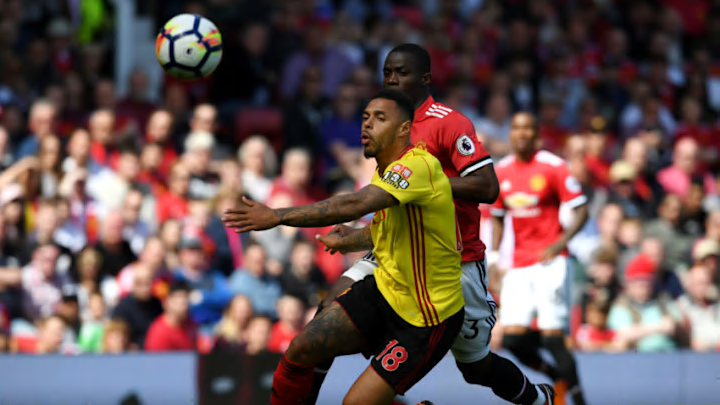Watford finished 14th last season after another inconsistent campaign, and enter 2017-18 facing some familiar questions.
The Watford Premier League Experience enters its fourth season in 2018-19 following a 2017-18 that provided a new riff on the old formula. Things appeared early on like they might be different under Marco Silva, like the Pozzo family had finally found the manager they’d been looking for, someone to lead them from mid-table obscurity to Europa League contention. Then Everton came calling.
The Hornets were fourth in October, when the Toffees attempted to lure Silva to Goodison Park. The situation grew so bad Watford launched an official complaint against Everton. With Silva distracted by the rampant speculation, Watford’s form collapsed. After the Toffees fired Ronald Koeman on Oct. 23, they lost 10 of their next 14 matches, before firing Silva in January, to be replaced by Javi Gracia.
The Spaniard did an ok job, helping Watford to a 4-1 win against Chelsea in only his third game in charge, part of a run of three wins and a draw in his first five matches. It all ended there, however, as the Hornets grabbed only five points from a possible 27 down the stretch. They were never seriously in danger of relegation, but that may have had more to do with the mediocrity around them than their own lack of quality.
But for the mid-season managerial switch, then, the season looked remarkably similar to the two that preceded it. Entering 2018-19, the question is whether anything will be different, and indeed how much the club should care if it isn’t. The route from lower- to upper-mid-table can be precarious (just ask Stoke or West Brom), and while Watford’s short-term approach tends to raise eyebrows, it has proven effective in ensuring Premier League survival.
Gracia already has a head start on his immediate predecessors, with six months to get accustomed to the club before his first preseason, and will become the longest-serving manager of Watford’s current stint in the top flight if he lasts the season. Even so, the summer has been as busy as ever, with five departures, including last seasons’ breakout star, Richarlison, and six arrivals, the biggest of which was Gerard Deulofeu, who spent the second half of last season on loan at Vicarage Road.
The core of the team is likely to remain the same. Abdoulaye Doucoure, who will need to replicate his form from last season if Watford are to excel, will be the main man in central midfield, where he’ll be a joined by a multiple players who seem like top half players without ever managing to finish in the top half of the table, including Tom Cleverley, Etienne Capoue and Will Hughes.
Next: The best player of all time on every Premier League team
The bigger problems are at either end of the pitch. Andre Gray, one of last summer’s big signings, managed only five goals in 31 league appearances, while Troy Deeney scored the same number in one fewer appearance. IN those final nine games under Gracia last season, Watford failed to score in six, and got only four goals overall. They got enough help from their other players to finish with 44 goals, joint 11th best in the league, but it’s not a good sign that Doucoure, a box-to-box midfielder was their top scorer with seven goals.
The defense, meanwhile, has unsurprisingly suffered from all the turnover. Watford conceded 64 goals in total last season, eight more than last-place West Brom, and the third worst mark in the league overall. As with much of the rest of the team, all the chopping and changing makes it hard to know how much this is a result of the players’ lack of quality and how is a result of the lack of a clear playing style.
Eighteen outfield players appeared in double-digit league games last season, two more than did the same for Manchester City, who won the league at a canter while making deep runs in three cup competitions. Some of that was down to injuries, but it’s also the product of a squad that has grown bloated under the leadership of four managers in less than four years.
And so for all the change at Vicarage Road over the past 12 months, they enter the new season facing many of the same old questions. There is quality in the squad, there is an ownership group willing to spend in the transfer market, but as ever, it’s unclear what exactly the guiding principle behind it all is or should be.
